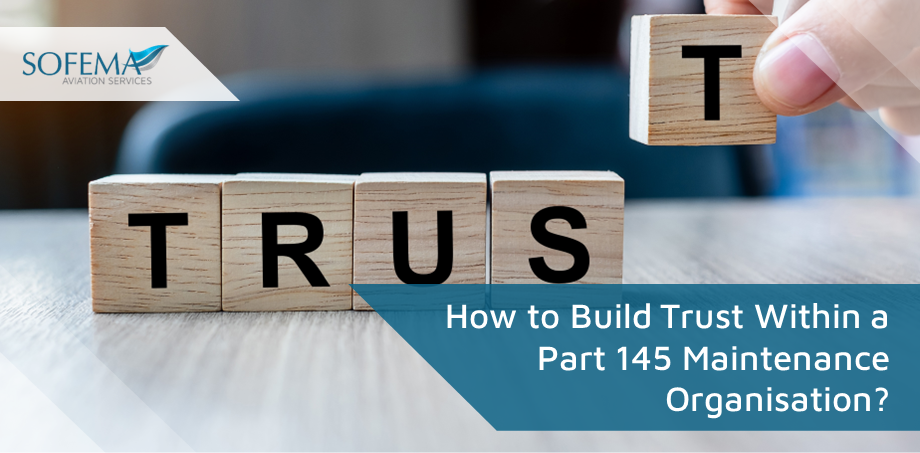Sofema Aviation Services (SAS) considers the process whereby an organisation can develop its Safety Management System to manage culture in a way which enhances the development of Trust.
Development of Trust – Introduction
A positive safety culture relies on a high degree of trust and respect between the personnel and the management, and it must, therefore, be created and supported at the senior management level.
- If the management does not treat individuals who identify hazards and report adverse events in a consistently fair and just way, those individuals are unlikely to be willing to communicate safety issues or to work with the management to effectively address the safety risks.
- As with trust, a positive safety culture takes time and effort to establish, and it can be easily lost.
- It is further recognised that the introduction of processes for hazard identification and risk assessment, mitigation and verification of the effectiveness of such mitigation actions will create immediate and direct costs, while related benefits are sometimes intangible, and may take time to materialize.
- Over time, an effective management system will not only address the risks of major occurrences, but also identify and address production inefficiencies, improve communication, foster a better organisational culture, and lead to more effective control of contractors and suppliers.
What is an Aviation Maintenance Safety Culture?
- Safety Culture is how the concept of safety is perceived, valued, and prioritized within an organisation.
- Safety Culture reflects the real commitment to safety at all levels in the organisation.
- Safety Culture refers to the “embedded practice” of Safety Behaviour by the individual within the organisation regardless of any oversight.
- Safety Culture is built on a framework of individual and organisational belief regarding the importance of safety, including any perception of peer and management “buy-in” to the concept of safety as a priority.
How Important is Safety Culture?
- Safety Culture directly impacts Safety Performance.
- Any willingness to engage with “unsafe” decisions (even when the imagined risk is believed to be small) can lead to negative outcomes, often in ways which were not envisioned.
- An effective Safety Management System (SMS) is a “Top Down” approach which requires a fully engaged leadership team.
- Whilst the SMS exists separately from the concept of Safety Culture behaviour, SMS and Safety Culture should go hand in hand.
5 Ways to Promote a Culture of Trust within the EASA Part 145 Organisation
- “Top down” leadership to show the way – build trust by leading by example.
- Always communicate expectations to each person in a clear and consistent way.
- Show that you are genuine and you care (must be real!)
- Deliver what you promise – If you say you will do it – then do it!
- Be Authentic – Be Real (anything less will be seen for what it is.)
Next Steps
Follow this link to our Library to find & Download related documents for Free.
Please see www.sofemaonline.com for online training & www.sassofia.com for classroom and webinar training or email team@sassofia.com for additional training details.
Tags:
Aircraft Maintenance, aviation, EASA, EASA Part 145, Part 145, Safety Management System, Sofema Aviation Services, EASA regulations, SMS, 145 Maintenance Organisation, SAS blogs, Trust




